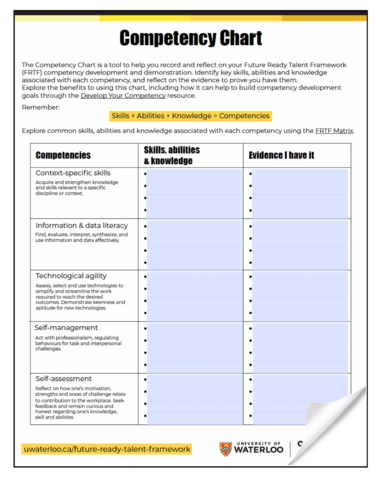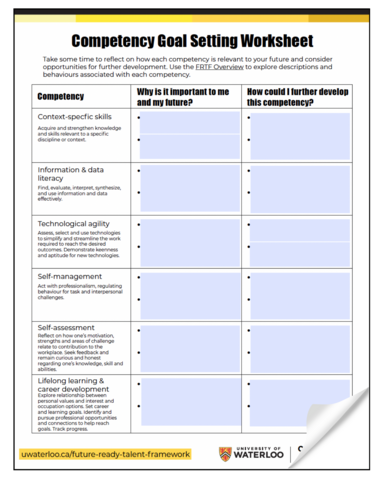Future Ready Talent Framework
The University of Waterloo developed the Future Ready Talent Framework (FRTF) to help students in their lifelong-learning journey.
The FRTF framework outlines four sets of competencies with a total of 12 competencies needed to navigate the emerging global workplace.
By understanding these competencies and how to develop them, you can take a fresh look at your career direction.
Understand and develop your competencies
The FRTF goes a step further than just identification, delving into reflection and development. As you consider the significance of the FRTF and its role in helping you achieve your goals, explore questions like:
- What does the FRTF mean to me and my future; how can I use it to help me reach my goal?
- How do I develop these competencies?
- Have I already been developing them? If so, how?
The Competency Chart presents an opportunity to reflect and record your current competency growth through a future-focused lens. You can explore meaningful connections between today and your future, and set goals to keep you moving forward even when you are unsure about the future of work.
The Competency Goal Setting Worksheet will help you createS.M.A.R.T. goals for competency development to help focus your efforts and increase your chances of achieving your career goals.

